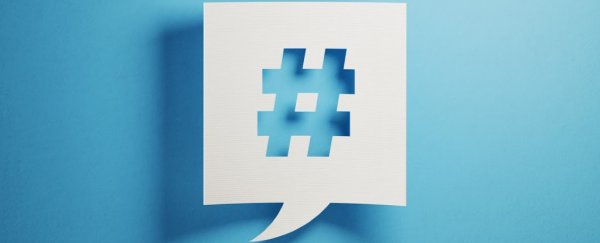The notion that fake news exists in its own universe turns out to be doubly true: One universe is the realm outside truth. The other is its own seedy pocket of social media.
In a new study published Thursday in the journal Science, political scientists surveyed the inhabitants of this Internet pocket around the time of the last presidential election, from August 1 to December 6, 2016.
They found that people who shared fake news were more likely to be older and more conservative. "Super-sharers" were responsible for the bulk of fake news, soaking their Twitter feeds in falsehoods with the gusto of kids with water pistols.
They were enthusiastic communicators, tweeting an average of 70 times a day, and had a very limited reach.
Only 0.1 percent of users shared 80 percent of the fake news.
"And almost all exposure is among 1 percent of Twitter users," said David Lazer, a political-science professor at Northeastern University and an author of the new report.
The algorithm that researchers designed to sniff out fake news - using a list of offending publishers, like Truthfeed.com, compiled by academics, journalists and fact-checkers - could not detect any fake news in the feeds of about 90 percent of users.
Lazer and his colleagues matched the Twitter accounts of more than 16,400 users who posted their real names, and provided their home cities, to publicly available voter records.
"We're almost certainly dealing with real people," he said. What's more, those real people had known attributes, including political-party registry, gender and age.
A growing body of evidence indicates that during the 2016 election, "the prevalence of fake news, both exposure to it and sharing it, was relatively rare in general. At the same time, it was pretty concentrated among specific subgroups," said Andrew Guess, a political scientist at Princeton University who was not involved with the new Twitter study.
Early this month, Guess and colleagues published an analysis of Facebook users and fake news in the journal Science Advances. More than 1,300 people who responded to a survey invitation gave the scientists access to their Facebook feeds.
The researchers mined these for misinformation, defining fake news outlets as those that publish deliberately false information based on a list compiled by BuzzFeed News.
Guess's study also found that fake news occupies a concentrated, small corner of the online ecosystem. Only 8.5 percent of people shared links from fake news websites. Age was the biggest predictor of sharing fake news - particularly Facebook users older than 65.
In Lazer's study of Twitter, age had an effect on someone's likelihood to share fake news, but political orientation was the strongest factor.
Among Twitter users who were on the left or center of the political spectrum, less than 5 percent shared fake content. But 11 percent on the right, and 21 percent on the extreme right, did so.
Lazer and his associates created a map of the media ecosystem that captured what the scientists called "co-consumption". If two media outlets are consumed by lots of the same people, the ecosystem forges a link.
"There's a mainstream cluster, and right in the middle of it is The Washington Post and the New York Times," Lazer said.
On the other hand, the consumption of fake news is remote and very concentrated. "If you are exposed to one fake news site, you're also likely exposed to a lot of other fake news sites," he said.
Last fall, Lazer's and Guess's teams presented their findings back-to-back at the same conference.
The groups used different methods, collected different data sets and examined different platforms (more than two-thirds of American adults use Facebook, according to a 2016 Pew survey, whereas about 1 in 5 use Twitter). But their results were very similar.
"It was sort of striking to us, and also to people in the room, that our findings were in such alignment," Guess said. "It seems like we're kind of onto something here."
The people most likely to encounter and share fake news are "also probably the people who are the most engaged in our political system," Guess said.
"This is a small group of people, but they might have disproportionate influence, because these are people who are very active and very invested in politics."
Guess said it is unclear why age is a risk factor for sharing fake news. "We have a generation that lived through a period where trust in media institutions was high, and now they just are more trusting of things they encounter online," Guess said.
Or it could be that these people, by and large, are handicapped by not being digital natives.
"They haven't developed skills and competencies that are second nature to other people that come in handy when trying to distinguish dubious from trustworthy information online," he said.
In the past, political scientists preferred to examine characteristics like partisanship rather than age, Guess said, but this is a question he and his colleagues are now exploring.
Lazer offered some hypothetical solutions to the problem of fake news.
"If you just cap the number of political URLs that you share to 20, it would substantially impact fake news sharing," he said.
The Twitter activity of non-super-sharers would remain almost untouched. Another option could be a turn-taking system, similar to a well-moderated discussion. He said he was not necessarily recommending these solutions, because pulling "invisible strings" made him nervous.
"It really is this seedy little neighborhood," Lazer said, "and people are entitled to move into seedy little neighborhoods."
2018 © The Washington Post
This article was originally published by The Washington Post.
